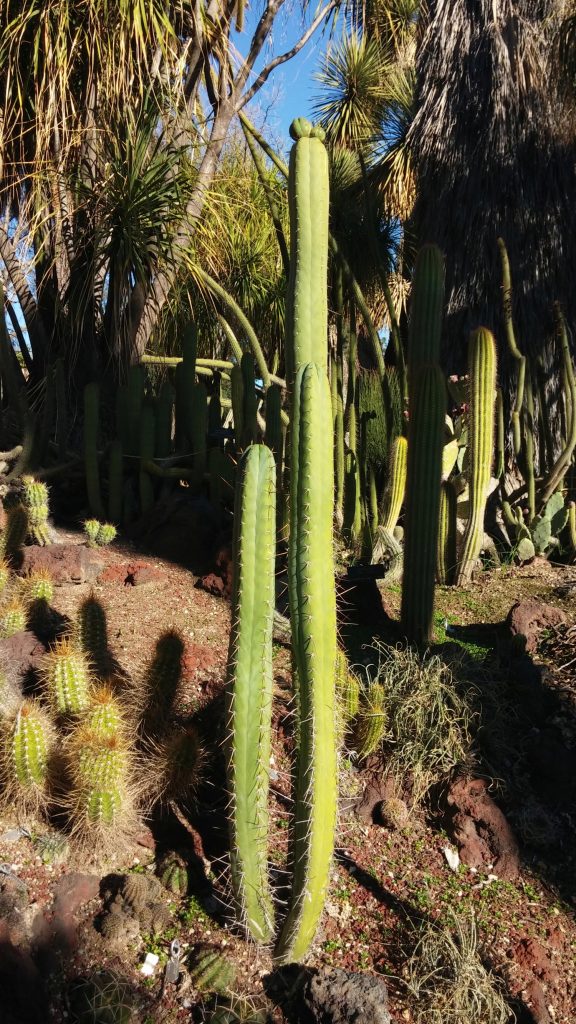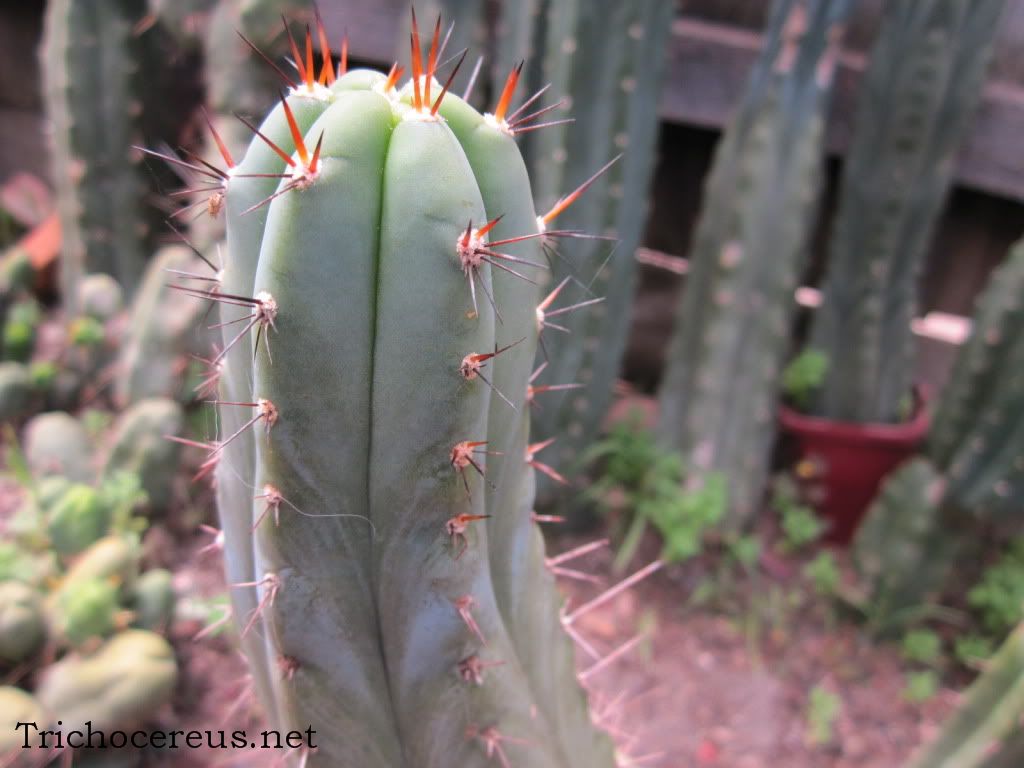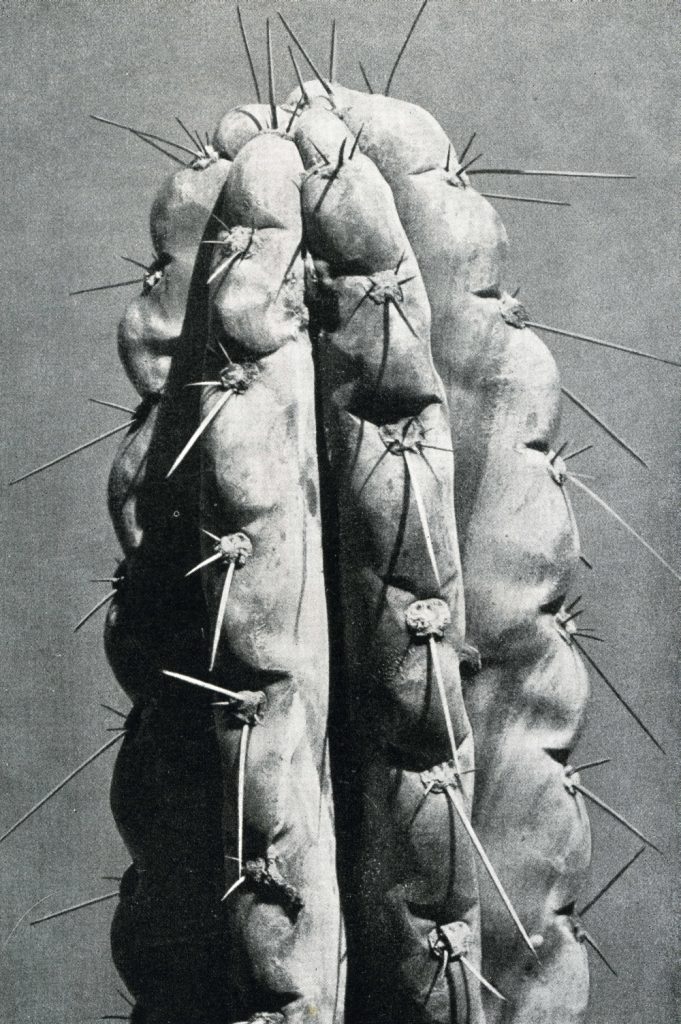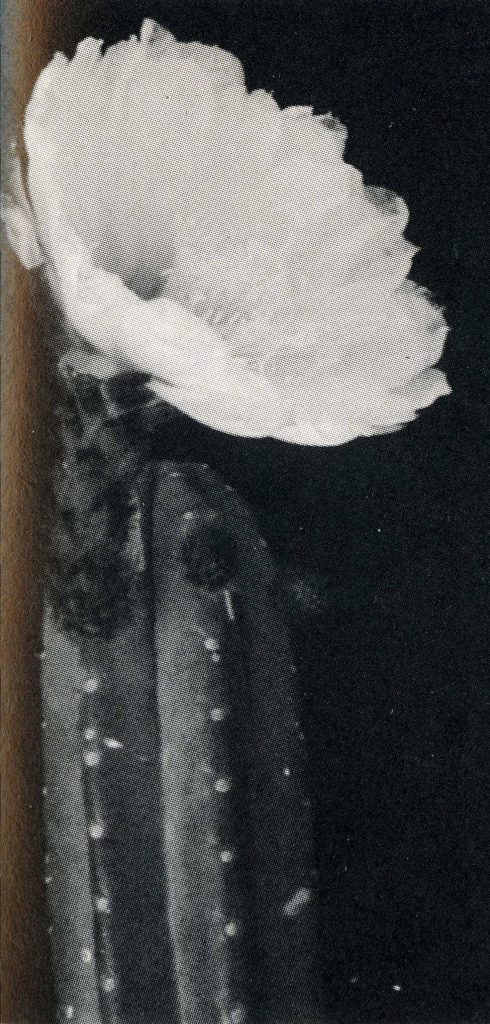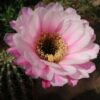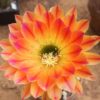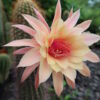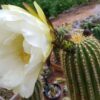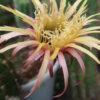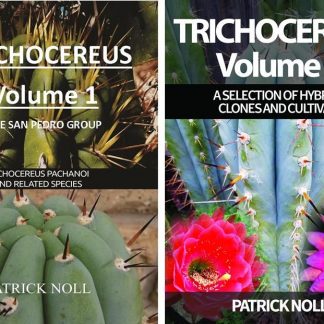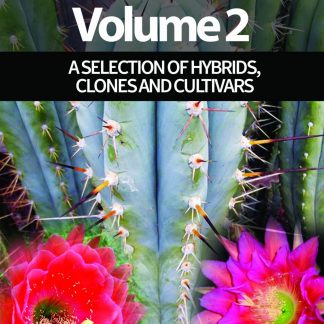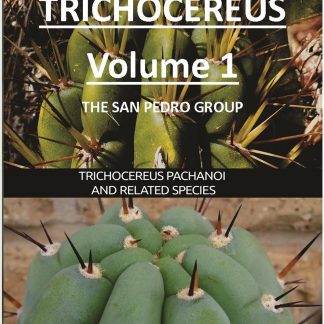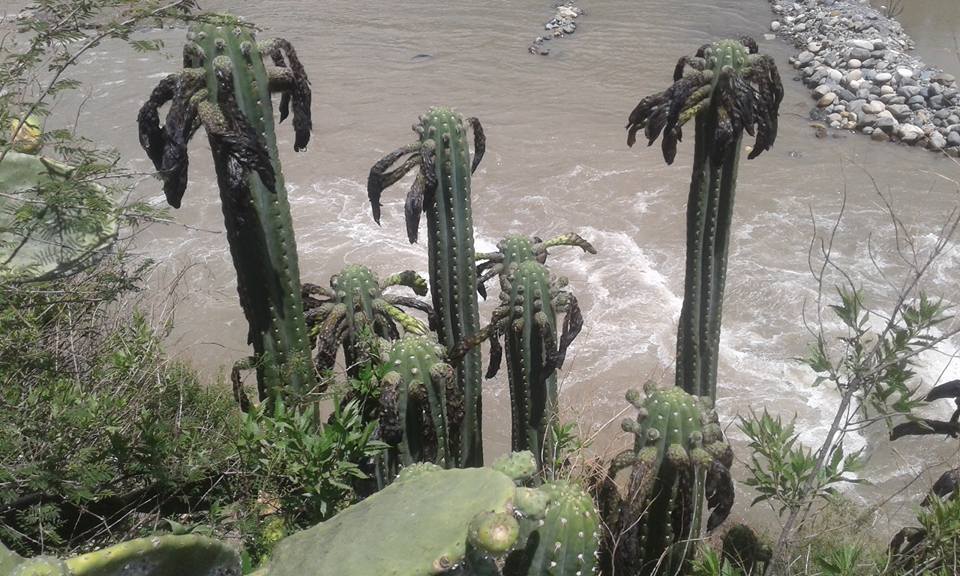
Trichocereus santaensis is columnar cactus and species described by Curt Backeberg and Werner Rauh. It is endemic to the Santa Valley in Peru. There are many different forms that belong into the larger context of T. santaensis, e.g. Trichocereus sp. Chavin de Huantar also known as El Lanzon, Trichocereus huanucoensis, Trichocereus pallarensis and many others. The current status of Trichocereus santaensis is unclear. The spiny populations might be placed into Trichocereus peruvianus, and the classic ones from Rio Santa might be placed into Trichocereus pachanoi. Without genetic testing it will be hard to estimate if Trichocereus santaensis is a valid species or just another Backeberg name.
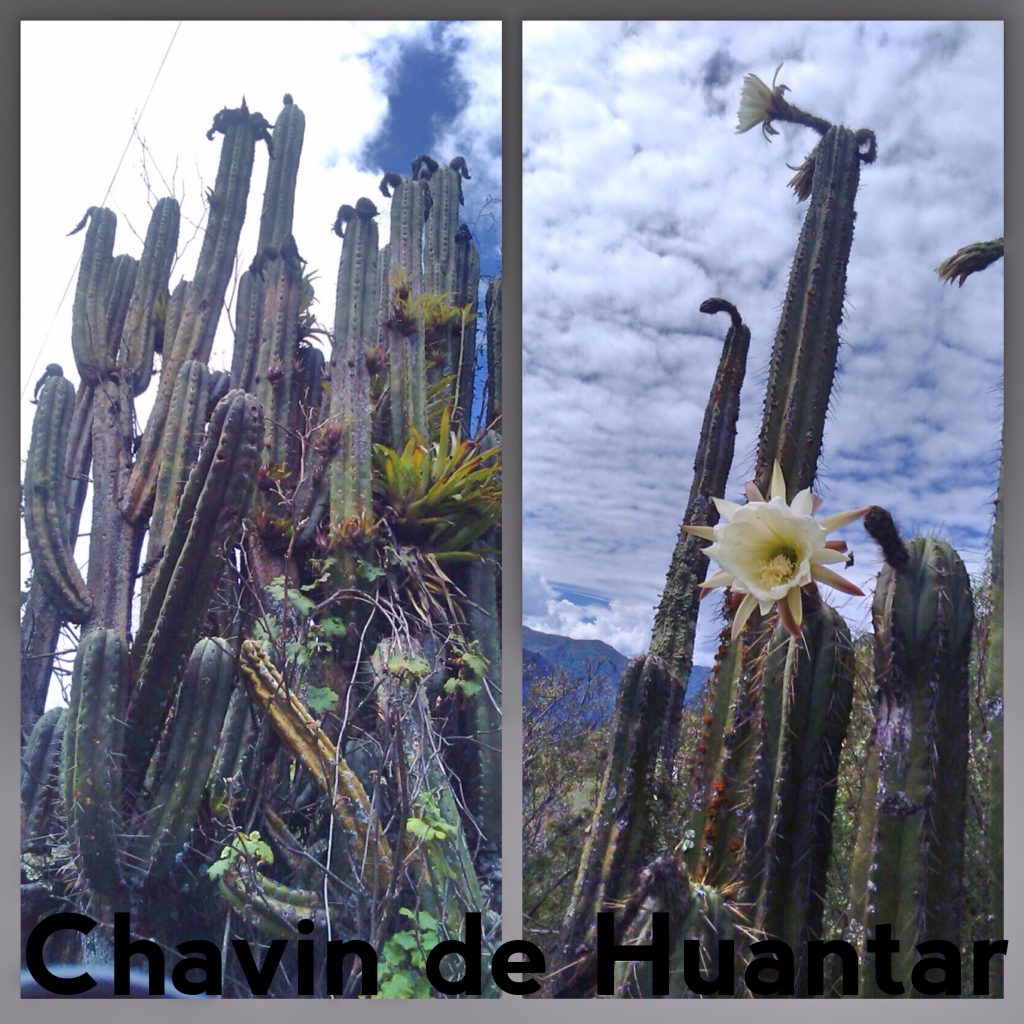
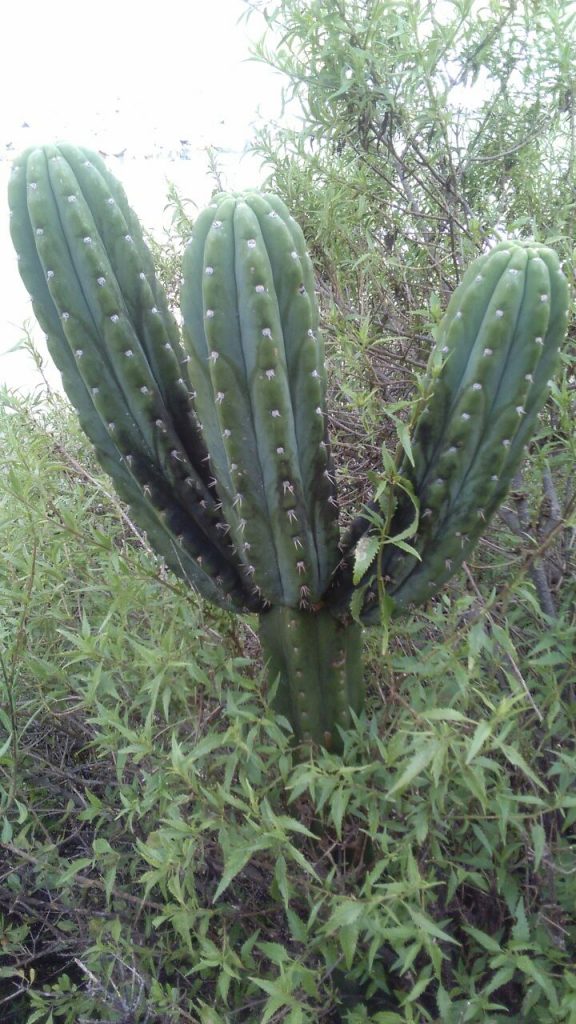
Origin of Trichocereus santaensis
Northern Peru, the valley around the Rio Santa, Puente, Bedoya, Huayanca
Can be kept apart from Trichocereus cuzcoensis by the absence of swollen spine bases. It also has a more frosted blue skin color, has fewer spines and shorter middle spines. Unlike Trichocereus peruvianus, it grows always columnar and does not grow prostrate.
Trichocereus Santaensis – Huntington Botanical Garden – by Richard Hipp!
Description of Trichocereus santaensis Rauh & backb g -. Descr. Cact. Nov. 20, 1956
Trichocereus santaensis can get up to five meters high and branches from the bottom. The stems are blue-green to a glaucous green. It has 7-9 ribs that are similarly broad than the ones on Trichocereus knuthianus aka Echinopsis knuthiana. There is a distinct furrow above the areoles. This distinct V-Notch is very strong in young pups. The areoles have a diameter of approximately 1 centimeter and Trichocereus santaensis has between 1-3 radial spines. Spines medium long to short. In addition, Trichocereus santaensis has one very long middle spine, which is up to 5 centimeters long.
Flower: The flower is white and gets up to 22 centimeters in length. It has a similar flower than other San Pedro types, which is another indicator that Trichocereus santaensis is just a regional form of another species, e.g. T. pachanoi or T. peruvianus.
Origin/Habitat: Rio Santa, Puente, Huayacana, Bedoya.
Trichocereus santaensis is very similar to Trichocereus cuzcoensis and is constantly confused with it. However, it does NOT have rounded, knobby spine bases. Besides, the spination is less strong and grows always columnar instead of creeping. Today, the species would probably not be considered to be correct and extensive DNA testing is necessary to look into the limits of this species and where other species begin.
Please note that T. santaensis is very variable due to the high number of regional forms. Some of which have red spines, some with yellow spines and some where the spines are completely absent.
In the Chapter of Trichocereus peruvianus, Backeberg wrote about its growth type:
This is Backebergs Key for Trichocereus santaensisBranches to 10 cm ∅
Blue green shoots
Ribs 7, very broad, strongly furrowed,
Not flattened furrows
Spines gray-brown, brighter towards the base
Middle spines:
1 spine is longer, spines up to 4 cm long.Friedrich Ritter´s description of Trichocereus santaensis
Trichocereus SANTAENSIS RAUH & BACKBG. 1956 RAUH: BEITRÄGE PERUANISCHER KAKTEENVEGETATION
1958, s. 361
Differences from TR. Pachanoi (data for the latter in parentheses):
Body gray-green (grass green to bluish green). Ri. 6-7, usually 6 (5-8, in
Peru medium to 10 and even higher), on the Areoles a slight v-shaped
Notch (little cross notch). Ar. 3-5 mm Dm
Spines: few or absent,Rsp. to 3, a few mm to 3 cm long,
Middle Spines. usually one, often it is the only Spine, a few mm to 4 cm long.
Flower. Near the apex, about 18-19 cm long, about 12 cm wide open (up to 20 cm wide between the
outer petals), obliquely upward (about protruding horizontally), just
(with two slight curves). Nectar Chamber 19 mm long (slightly longer), without
significant gap (small space), with little or no
Nectar (with some nectar). Tube about ca 6 cm long with 2.5 cm further
Opening (longer and wider). Petals slightly shorter and narrower, the outer
almost adjacent to the interior Ones (strongly bent outwards),
SANTA Valley at 2000 m and about Depart. Ancash; only here. No. FR 567a.
Fig. 1,188,
Trichocereus santaensis / Echinopsis santaensis at the Rio Santa (Riley Flatten)
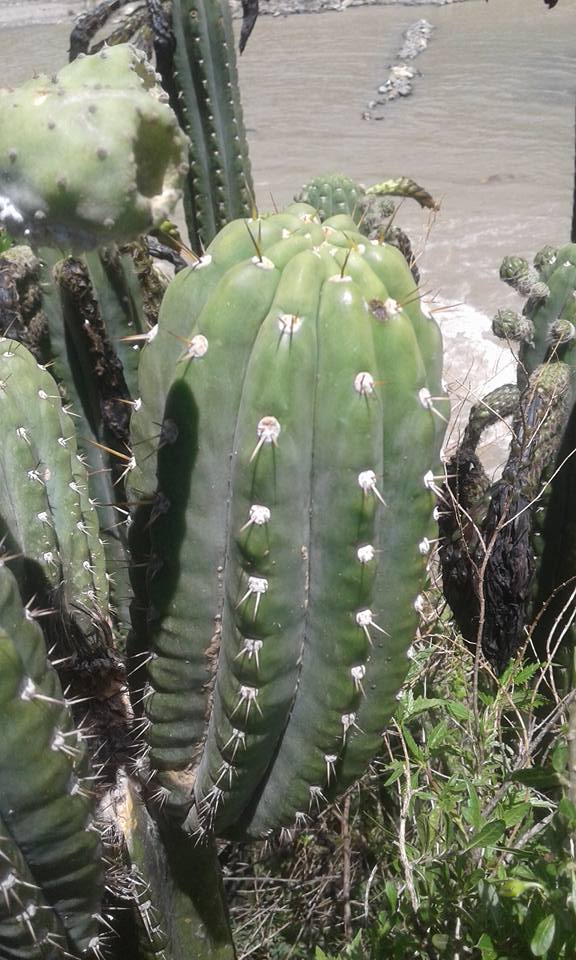


Photos below Trichocereus santaensis / Echinopsis santaensis in Chavin de Huantar, El Lanzon (Riley Flatten)
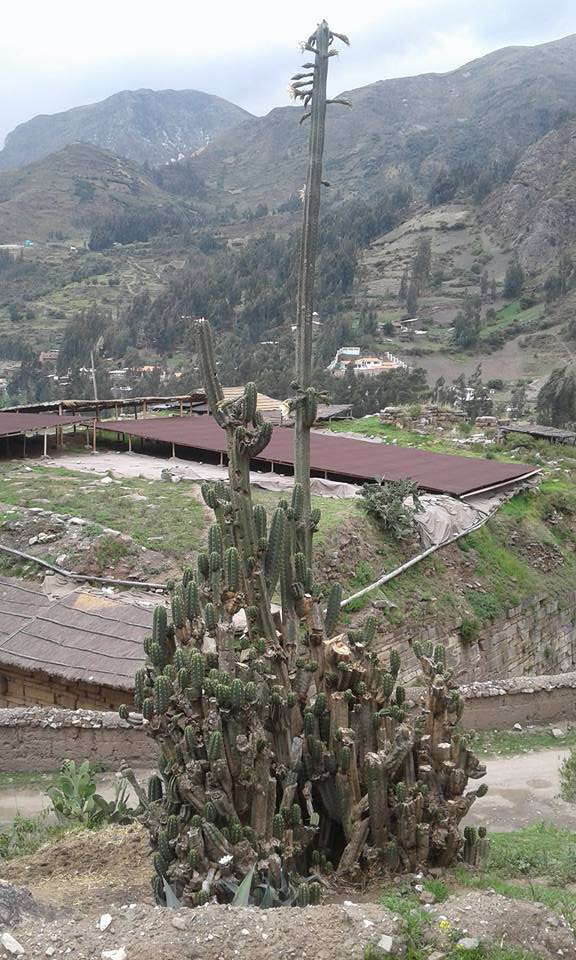
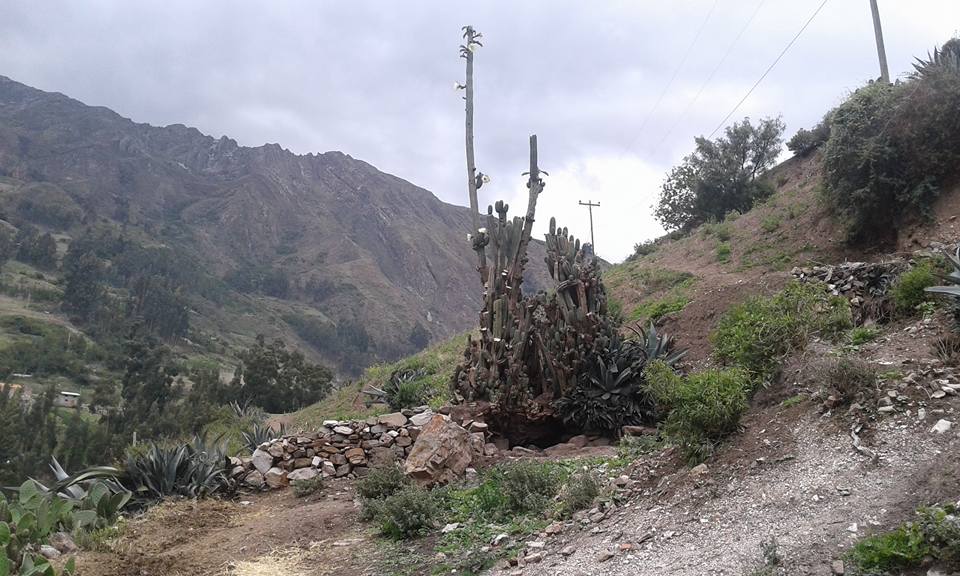
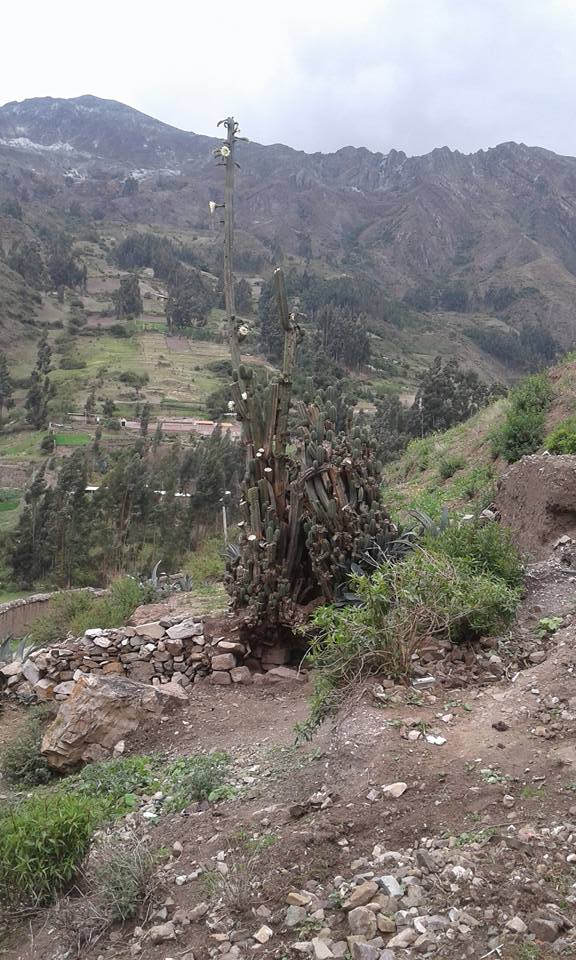
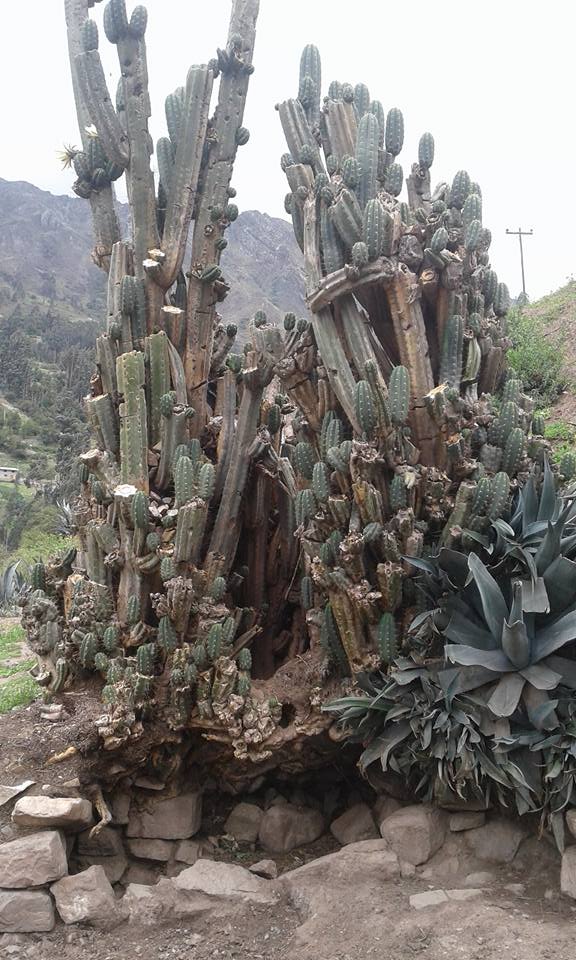
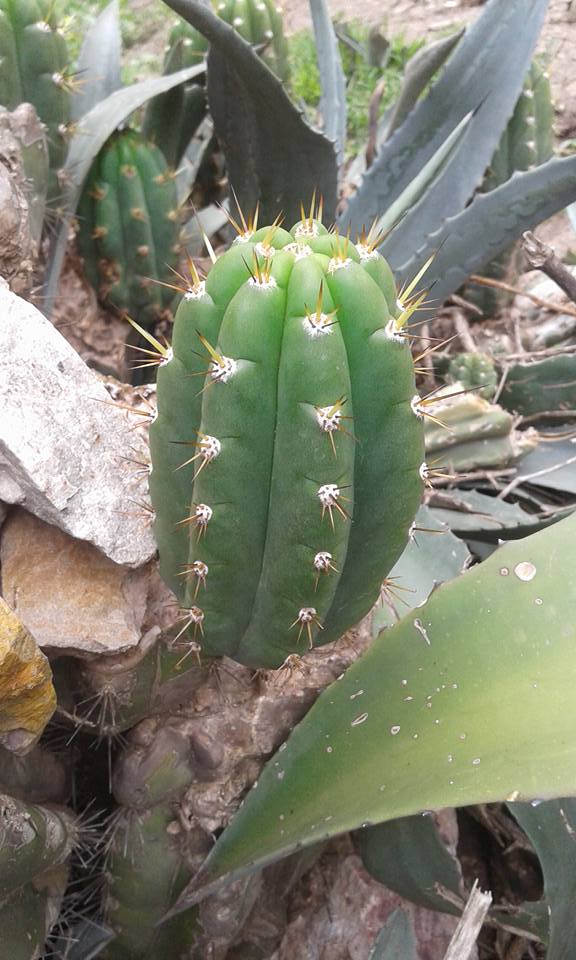

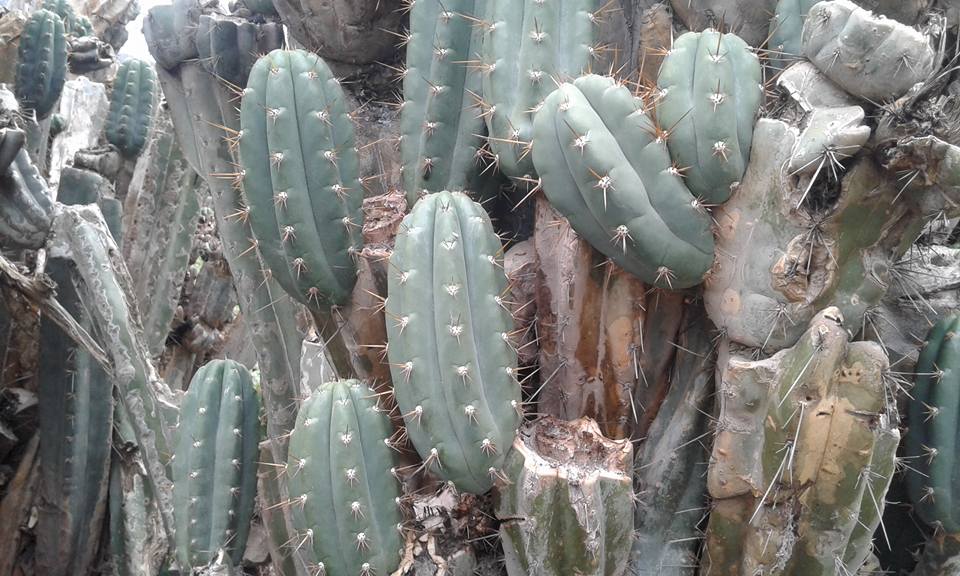
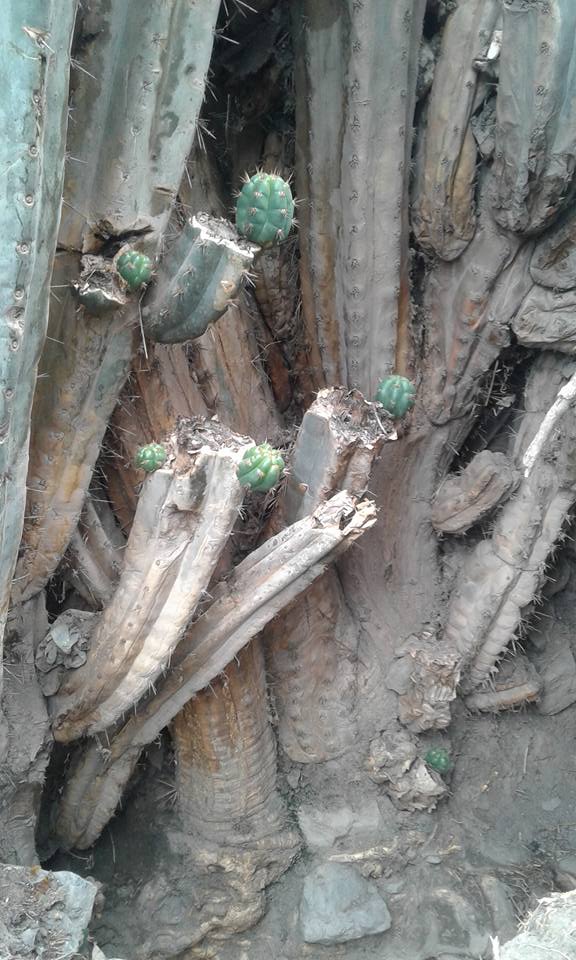
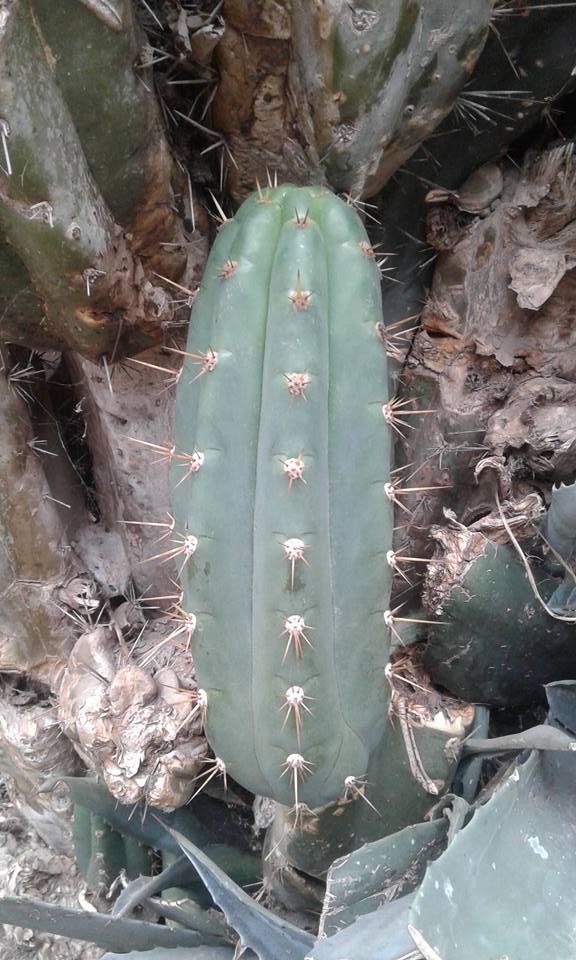
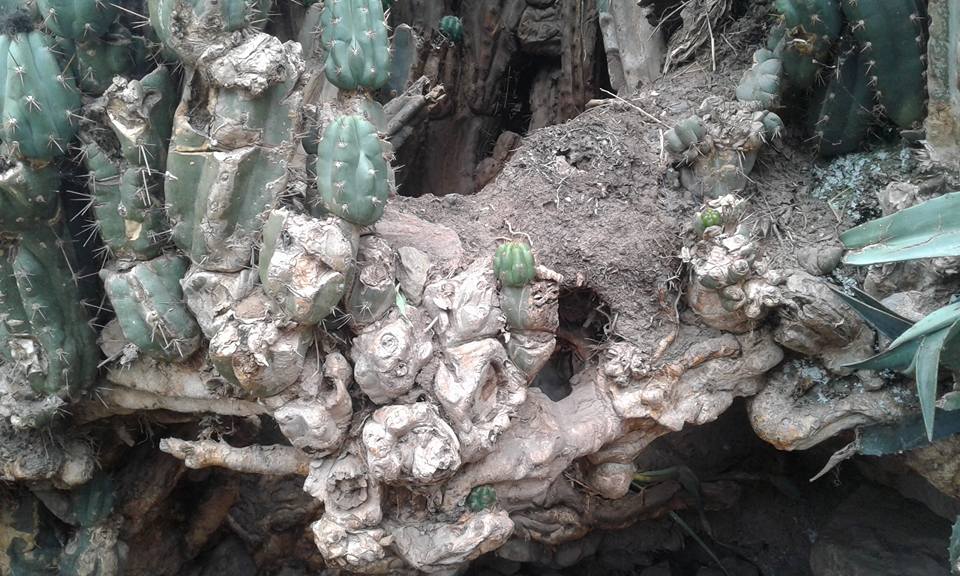

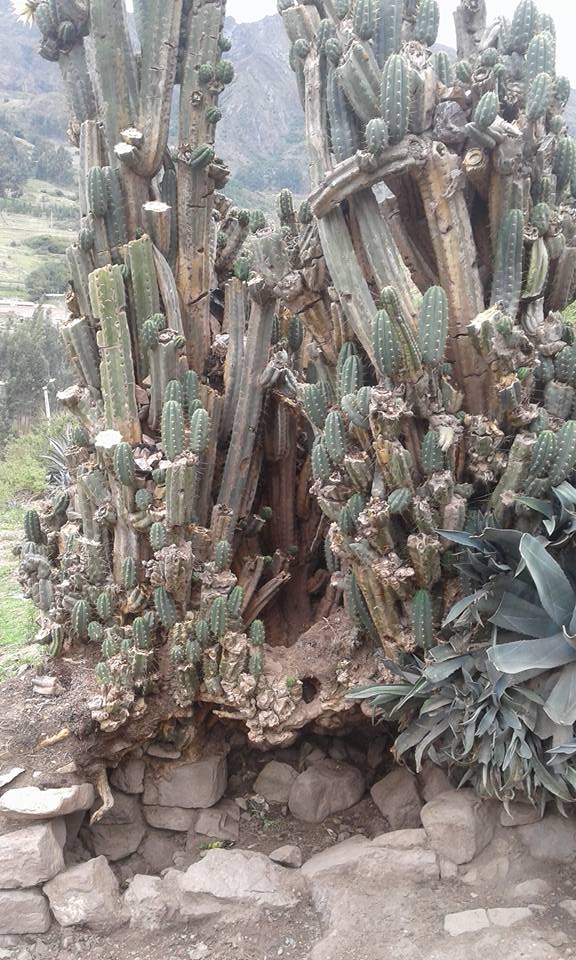
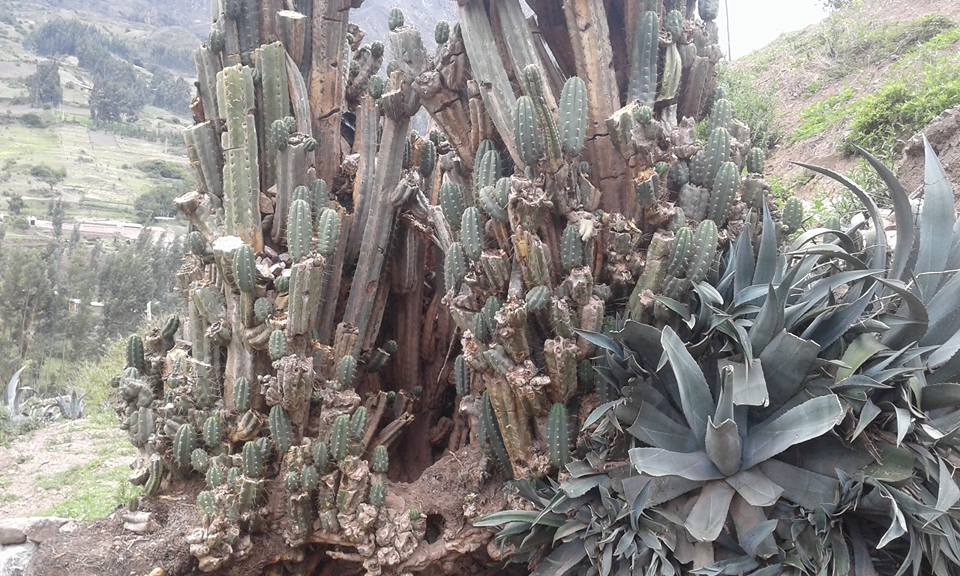
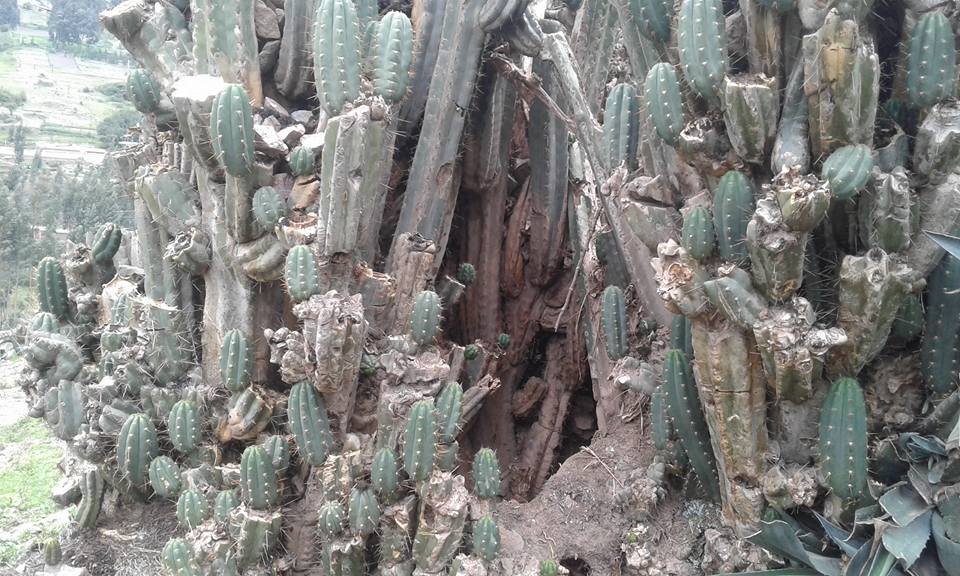
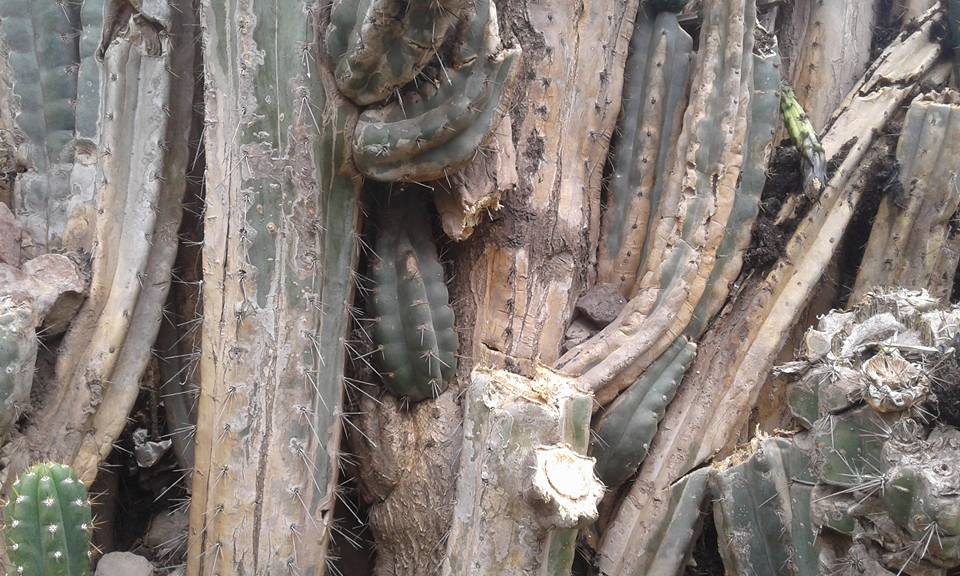
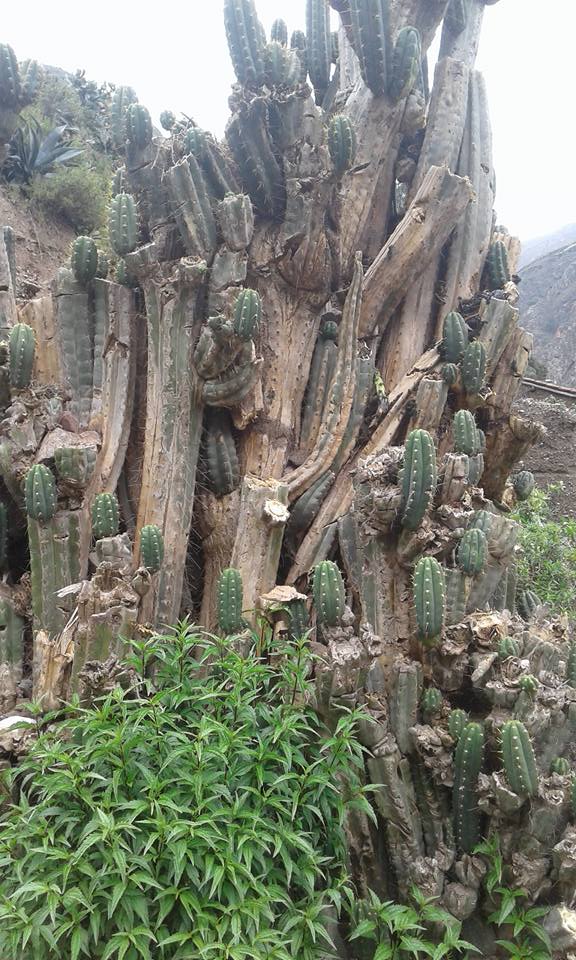
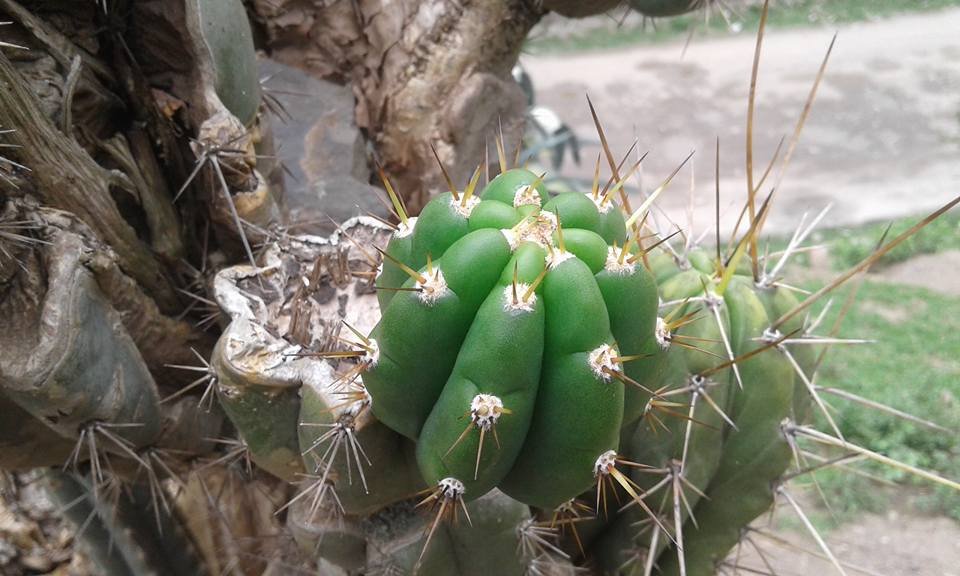

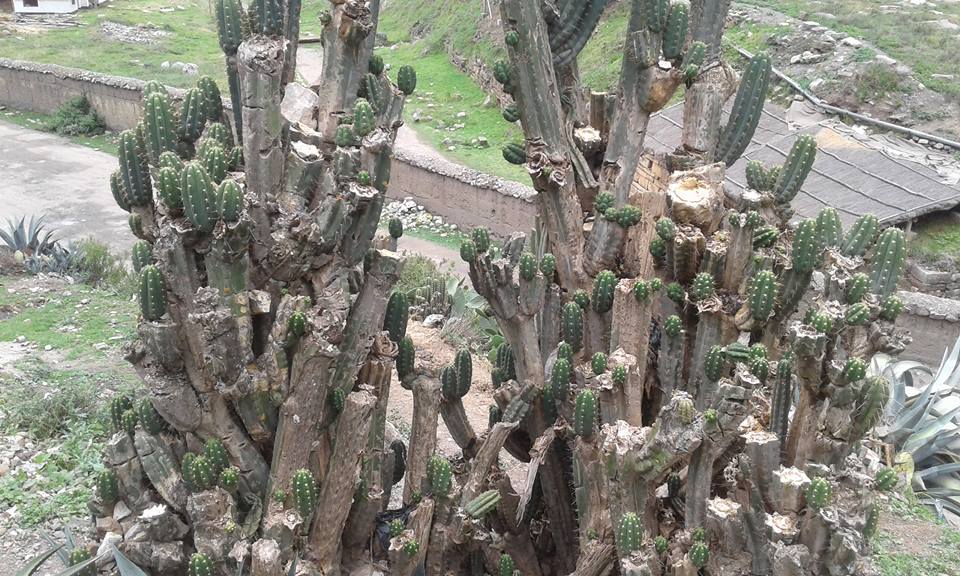
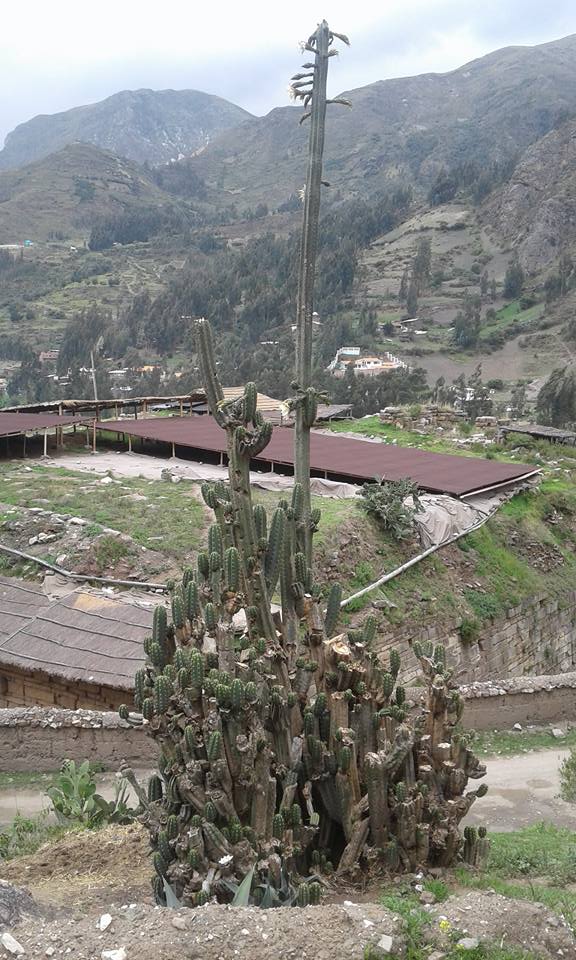

Check out our main plant database pages for Trichocereus pachanoi aka Echinopsis pachanoi here:
And Trichocereus bridgesii here:
Also check out our Trichocereus Facebook group here:

